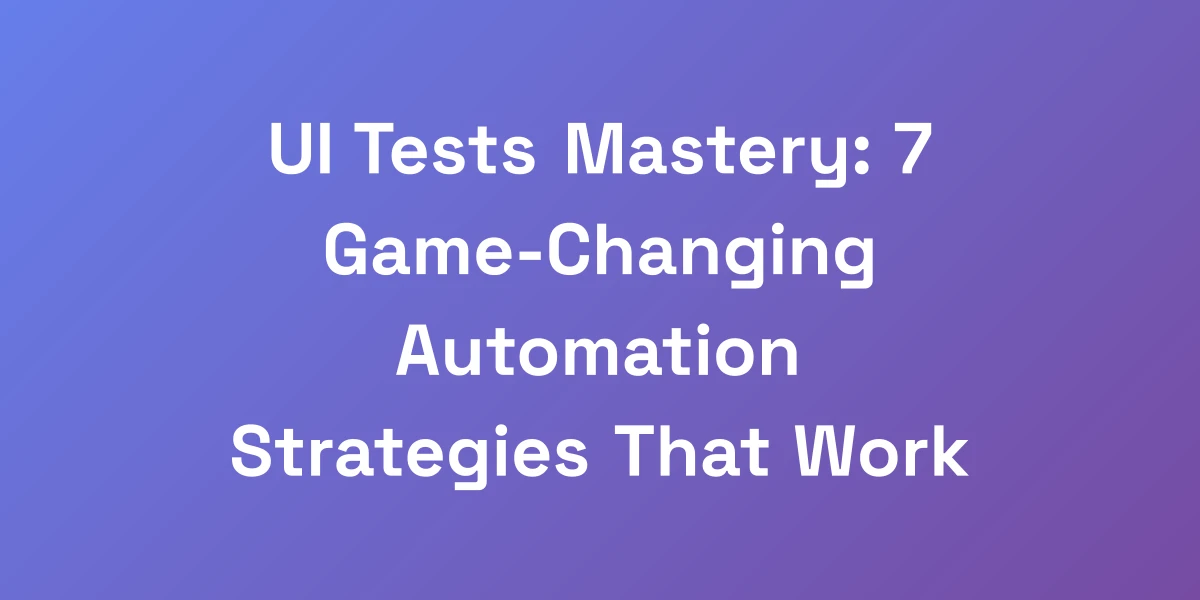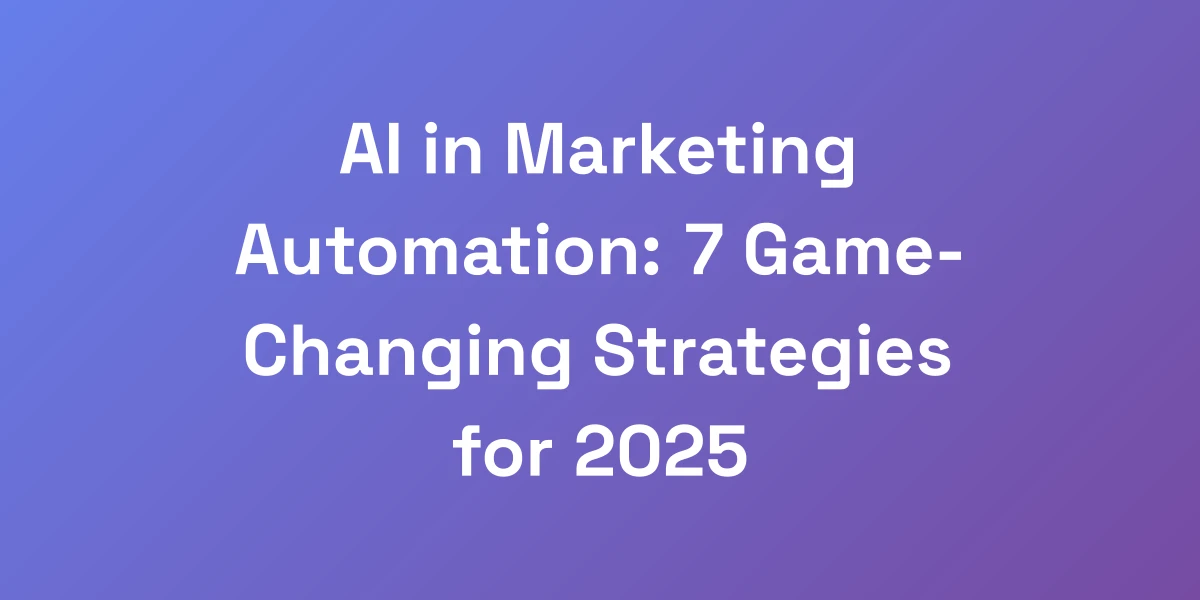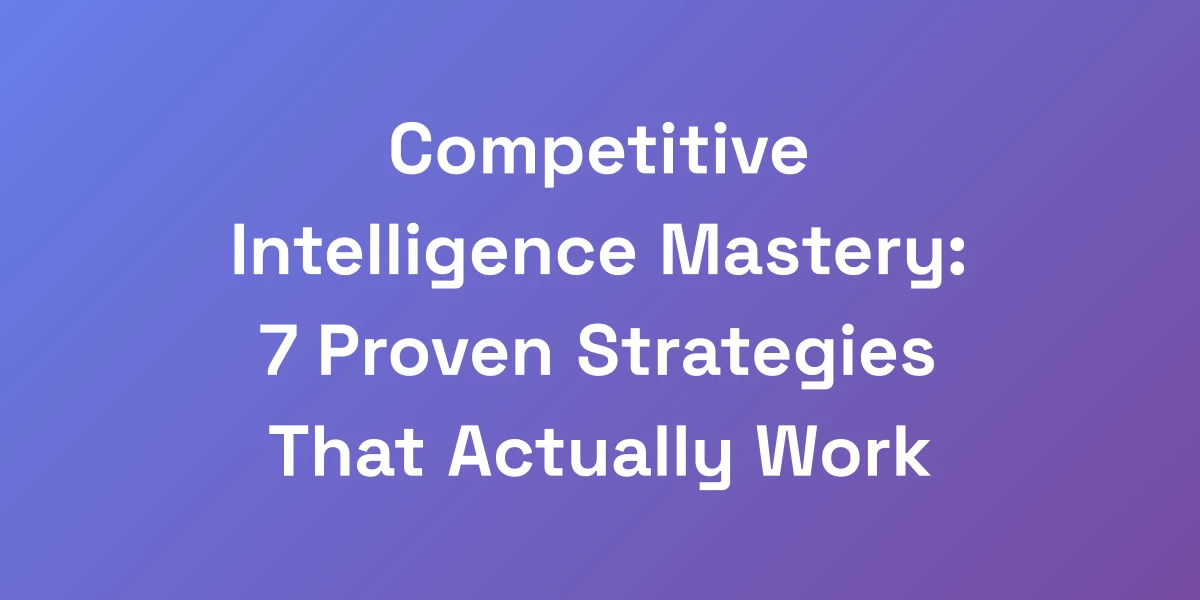
UI Tests Mastery: 7 Game-Changing Automation Strategies That Work
Mar 14, 2025 | By [email protected]
Introduction
Ever felt like you’re throwing spaghetti at the wall with your UI tests? You’re not alone. UI testing is more than just verifying if buttons click or pages load—it’s about crafting a resilient system that spotlights issues before they drain your resources.
Imagine investing countless hours in manual testing, only to find out your app crashes when millions of users are on board. Frustrating, right? We’ve seen it happen too many times. But what if you could flip the script?
Welcome to the realm where UI test automation isn’t a luxury—it’s a necessity. We’re diving deep into seven strategies that aren’t just buzzworthy but proven to transform your testing game. Ready to stop the guessing and start mastering UI tests? Let’s get into it.
The Hidden Truth About UI Testing Most Developers Miss
Let me hit you with some reality: 90% of developers are doing UI testing completely wrong. They’re stuck in this endless loop of manual testing, wondering why their automation efforts keep failing.
Here’s the truth – UI testing isn’t just about checking if buttons work. It’s about building a bulletproof system that catches issues before they cost you millions. We’ve seen companies burn through cash trying to fix production issues that proper UI tests would have caught in seconds. The game has changed, and if you’re not adapting, you’re already behind.
The Real Cost of Poor UI Testing
Consider this: the cost of poor software quality in the U.S. hit $2.41 trillion in 2022. That’s a staggering figure, and a significant chunk of it stems from inadequate UI testing. When your interface fails, you’re not just losing users; you’re bleeding revenue.
Let’s break it down:
- User Dissatisfaction: A flawed UI frustrates users, leading to high churn rates.
- Reputation Damage: One bad experience can tarnish your brand’s image.
- Increased Costs: Post-release fixes are exponentially more expensive than catching issues early.
Imagine launching a feature only to discover major flaws months later. That’s not just a glitch; it’s a potential disaster.
Why Traditional UI Testing Methods Are Dying
Traditional UI testing methods are like using a hammer for every job. They’re blunt, inefficient, and often miss the nuanced issues that automated strategies can catch.
Why are they fading?
- Time-Consuming: Manual tests are slow and can’t keep up with rapid development cycles.
- Lack of Scalability: As your application grows, manual testing becomes untenable.
- Human Error: People make mistakes, especially when fatigued or bored by repetitive tasks.
It’s clear—sticking to old-school methods is a surefire way to fall behind and face mounting technical debt.
The Automation Revolution in UI Testing
Automation isn’t the future; it’s the present. The automation testing market revolution in UI test automation is driven by the need for speed, accuracy, and scalability.
Here’s why you should be excited:
- Speed: Automated tests run faster than any human, offering immediate feedback.
- Consistency: Eliminate human error and ensure tests are executed exactly the same way every time.
- Scalability: Easily expand your test suite as your application grows.
Think of automation as your relentless ally, tirelessly ensuring your UI remains flawless.
Common UI Testing Myths Debunked
Let’s bust some myths that are holding you back:
- Myth 1: Automated UI Tests Are Too Complex
Reality: With low-code platforms for test automation, setting up automated tests is straightforward and manageable. - Myth 2: They’re Expensive
Reality: The initial investment pales in comparison to the long-term savings and ROI from catching issues early. - Myth 3: Automation Replaces Manual Testing
Reality: Automation complements manual testing, handling repetitive tasks while humans focus on exploratory testing.
Don’t let misconceptions hinder your progress. Embrace the truth and unlock the full potential of UI test automation.
The New Paradigm of Modern UI Testing
Welcome to the new age of UI testing. Modern strategies focus on integration, intelligence, and adaptability. It’s not just about running tests but creating a dynamic ecosystem that evolves with your application.
What defines this new paradigm?
- Integration with CI/CD: Seamlessly incorporate testing into your development pipeline for continuous quality assurance.
- AI and Machine Learning: Utilize intelligent algorithms to predict, detect, and adapt to changes in your UI.
- Comprehensive Coverage: Achieve thorough test coverage, spanning various devices, browsers, and user scenarios.
This is not a theoretical shift—it’s a practical transformation that drives efficiency and reliability.
Building Your UI Test Automation Foundation
Listen, if you want to win at UI test automation, you need to build on solid ground. We’ve seen countless teams jump straight into writing tests without laying the proper foundation – and it’s like trying to build a skyscraper on quicksand.
Your automation framework needs to be bulletproof. This isn’t about following some cookie-cutter approach you found on Stack Overflow. It’s about creating a system that scales with your business and aligns with your overall strategies like digital marketing for small businesses, delivering consistent results. Get this part right, and you’ll 10x your testing efficiency overnight.
Essential Components of a Robust UI Testing Framework
A robust UI testing framework is the backbone of your automation strategy. Here are the essential components you need:
- Test Runner: Executes your tests efficiently and provides detailed reports.
- Assertion Library: Validates the outcomes of your tests with precise assertions.
- Reporting Tools: Offer insights into test results, helping you pinpoint issues swiftly.
- Data Management: Handles test data dynamically to mimic real-world scenarios.
- Integration Capabilities: Ensures smooth interaction with CI/CD pipelines and other tools.
Each component plays a critical role in ensuring your UI tests are reliable, maintainable, and scalable.
Selecting the Right Tools for Your Stack
Choosing the right tools is pivotal. Not all UI testing tools are created equal, and picking the wrong one can set you back. Here’s how to make the right choice:
- Compatibility: Ensure the tool integrates seamlessly with your tech stack.
- Ease of Use: Look for intuitive interfaces and robust documentation to reduce the learning curve.
- Community and Support: A strong community can be invaluable for troubleshooting and best practices.
- Scalability: The tool should be able to handle your growing testing needs.
Tools like Playwright are gaining traction with a 45.1% adoption rate in 2024, signaling their effectiveness and reliability in the UI testing space.
Setting Up Your First Automated Test Suite
Starting your first automated UI test suite might seem daunting, but breaking it down makes it manageable:
- Define Objectives: Identify what you want to achieve with your tests—be it functionality, performance, or usability.
- Choose Your Tools: Based on your stack compatibility and team proficiency.
- Structure Your Tests: Organize tests logically, grouping similar functionalities together.
- Write Your First Tests: Start simple. Focus on critical paths first, like user login or checkout processes.
- Run and Refine: Execute your tests, analyze results, and iterate to improve coverage and reliability.
Remember, starting small and scaling incrementally ensures a smooth transition to full-fledged automation.
Creating Maintainable Test Scripts
Maintainability is key to the longevity of your UI tests. Here’s how to ensure your test scripts remain robust and easy to manage:
- Modular Design: Break down tests into reusable components to reduce redundancy.
- Clear Naming Conventions: Use descriptive names for tests and functions to enhance readability.
- Documentation: Keep your test scripts well-documented, explaining the purpose and logic behind each test.
- Regular Refactoring: Periodically review and improve your test scripts to adapt to changes in the UI.
- Version Control: Use version control systems like Git to track changes and collaborate effectively.
A maintainable framework saves time and reduces frustration, ensuring your tests remain effective as your application evolves.
Version Control Best Practices for UI Tests
Version control isn’t just for your code—it’s crucial for your UI tests too. Here’s how to manage your test scripts effectively:
- Consistent Commit Messages: Use clear and descriptive messages to track changes and purposes.
- Branching Strategies: Implement strategies like GitFlow to manage test script development alongside your main project.
- Code Reviews: Regularly review test scripts to ensure quality and consistency.
- Automated Merging: Use tools to handle merge conflicts and ensure smooth integration of test scripts.
- Backup and Recovery: Ensure your test scripts are backed up and recoverable in case of data loss.
Adhering to these best practices ensures your UI test automation remains organized, collaborative, and resilient against changes.
Advanced UI Test Automation Strategies
Here’s where most teams drop the ball – they stick to basic automation patterns and wonder why they’re not seeing results. The real money is in advanced strategies that scale exponentially with your testing needs.
I’m talking about implementing AI-driven test generation, parallel test execution, and smart waiting mechanisms that cut your test execution time in half. These aren’t just fancy terms – these are the exact strategies that helped our clients reduce their testing time from days to hours.
AI-Powered Test Generation Techniques
AI is transforming UI test automation by automating the creation and maintenance of test scripts, similar to how search engine optimization automation is revolutionizing SEO strategies. Here’s how:
- Dynamic Test Generation: AI algorithms analyze user interactions to create relevant test cases automatically.
- Self-Healing Tests: Self-healing test automation detects changes in the UI and adjusts test scripts accordingly, reducing maintenance efforts by up to 80%.
- Predictive Analytics: AI predicts which parts of the UI are most likely to have issues, allowing you to prioritize testing efforts.
Leveraging AI-driven tools can significantly enhance the efficiency and effectiveness of your UI tests.
Parallel Test Execution Framework
Running tests sequentially is a bottleneck. Parallel test execution allows multiple tests to run simultaneously, drastically reducing overall execution time.
Here’s how to implement it:
- Distributed Testing: Spread tests across multiple machines or containers.
- Resource Allocation: Optimize the use of CPU and memory to handle parallel executions efficiently.
- Load Balancing: Ensure tests are evenly distributed to prevent overloading any single resource.
With parallel execution, what used to take days can now be accomplished in a fraction of the time, making your UI test automation truly scalable.
Smart Element Location Strategies
Locating UI elements reliably is crucial for stable tests. Smart location strategies reduce flakiness and improve test reliability.
Consider these approaches:
- Use Stable Selectors: Opt for unique identifiers like IDs over dynamic attributes.
- Relative Locators: Find elements based on their position relative to other stable elements.
- Text-Based Selection: Select elements based on their visible text, ensuring they’re user-facing and less likely to change.
Implementing smart location strategies minimizes the chances of test failures due to UI changes, keeping your UI tests robust and reliable.
Cross-Browser Testing Automation
Your application lives in a diverse ecosystem of browsers and devices. Cross-browser testing ensures your UI tests cover all bases.
Here’s how to automate it effectively:
- Use Comprehensive Testing Tools: Tools like BrowserStack and LambdaTest offer extensive browser coverage.
- Parallel Execution: Run tests across multiple browsers simultaneously to save time.
- Consistent Environments: Use containerization to create consistent testing environments across different browsers.
Automating cross-browser testing guarantees that your application delivers a seamless user experience regardless of the browser or device used.
Visual Regression Testing Implementation
Visual regression testing catches unexpected changes in your UI’s appearance, ensuring your application not only works but looks right too.
Implement it with these steps:
- Select the Right Tool: Tools like Applitools and visual regression testing tools are leaders in visual regression testing.
- Define Baseline Images: Capture baseline screenshots that future tests will compare against.
- Automate Screenshot Capturing: Integrate screenshot capturing into your test runs to detect visual anomalies.
- Analyze Differences: Use AI-powered analysis to highlight significant changes and ignore trivial variations.
Visual regression testing enhances your UI test automation by ensuring that your application not only functions correctly but also maintains a consistent and appealing appearance.
Scaling Your UI Test Suite for Enterprise
Want to know what separates the amateurs from the pros? It’s how they handle scale. When you’re running thousands of UI tests daily, you can’t afford flaky tests or poor performance.
Every minute of test execution costs money. We’ve helped companies cut their UI testing costs by 70% while increasing coverage by implementing enterprise-grade scaling strategies. This isn’t theory – it’s battle-tested methodology that works in the real world.
Cloud-Based Test Execution Strategies
Cloud-based testing offers flexibility and scalability that on-premises setups simply can’t match. Here’s how to harness it:
- Elastic Resources: Scale your testing infrastructure up or down based on demand, optimizing cost and performance.
- Geographical Distribution: Test from multiple locations to ensure global accessibility and performance.
- Seamless Integration: Integrate cloud testing with your CI/CD pipelines for continuous and efficient testing.
Embracing cloud-based execution strategies ensures your UI test automation can handle the demands of enterprise environments seamlessly.
Managing Test Data at Scale
Effective test data management is crucial for running large-scale UI tests. Here’s how to keep it under control:
- Data Generation: Use tools to generate realistic test data that mimics real user interactions.
- Data Masking: Protect sensitive information by masking or anonymizing test data.
- Centralized Storage: Store test data in a centralized repository to ensure consistency across tests.
- Automated Data Refresh: Update test data automatically to reflect the latest application state.
Proper test data management enhances the reliability and comprehensiveness of your UI tests, enabling you to scale without compromising on quality.
Performance Optimization Techniques
Optimizing the performance of your UI tests ensures they run efficiently, saving time and resources. Here’s how:
- Minimize Test Overhead: Reduce unnecessary steps and streamline your test scripts.
- Optimize Selectors: Use efficient selectors to speed up element identification.
- Asynchronous Operations: Leverage asynchronous operations to prevent tests from waiting unnecessarily.
- Parallel Execution: Implement parallel test execution to maximize resource utilization.
Performance optimization isn’t just a nice-to-have; it’s essential for maintaining efficient UI test automation at scale.
Continuous Integration Pipeline Integration
Integrating UI tests into your CI/CD pipeline ensures continuous quality assurance and rapid feedback.
Here’s how to make it work:
- Automate Test Runs: Trigger UI tests automatically on code commits, merges, and deployments.
- Early Detection: Catch issues early in the development cycle, reducing the cost and effort of fixes.
- Consistent Feedback: Provide developers with immediate insights into the impact of their changes.
- Integration with Tools: Use CI/CD tools like Jenkins, GitHub Actions, or GitLab CI to seamlessly incorporate UI test automation.
Embedding UI tests within your CI/CD pipeline transforms them from isolated checks into a continuous quality assurance mechanism.
Monitoring and Analytics Implementation
Monitoring your UI test automation isn’t just about knowing if tests pass or fail. It’s about gaining insights to continuously improve.
Here’s what to focus on:
- Test Coverage Metrics: Track which parts of your UI are tested and identify gaps.
- Performance Metrics: Monitor test execution times and resource usage to identify bottlenecks.
- Failure Analysis: Analyze failure patterns to pinpoint recurring issues and their root causes.
- Trend Analysis: Observe trends over time to assess the impact of your UI test automation strategies.
Implementing robust monitoring and analytics transforms your testing framework into a data-driven powerhouse, driving continuous improvement. Additionally, strategies like SEO for startups can offer valuable insights into optimizing your automation processes.
Measuring and Optimizing UI Test ROI
Here’s the brutal truth about UI test automation: if you can’t measure it, you can’t improve it. Every test should justify its existence in dollars and cents.
We’ve developed a framework that helps teams calculate the exact ROI of their UI testing efforts, allowing them to optimize their test suite for maximum impact. When you start thinking about testing in terms of business value, everything changes. This is how you turn your testing team from a cost center into a profit center.
Key Performance Metrics for UI Testing
To measure ROI effectively, you need to track the right metrics. Here are the key performance indicators (KPIs) for UI testing:
- Test Coverage: The percentage of the UI covered by automated tests.
- Defect Detection Rate: The number of defects identified by UI tests versus those found in production.
- Test Execution Time: The total time taken to run your UI test suite.
- Cost Savings: The reduction in manual testing costs thanks to automation.
- Return on Investment (ROI): Calculated as Savings ÷ Investment.
Tracking these metrics provides a clear picture of the financial and operational impact of your UI test automation.
Cost-Benefit Analysis Framework
Understanding the financial implications of UI test automation is crucial. Here’s a straightforward cost-benefit analysis framework:
- Calculate Investment: Include costs for tools, infrastructure, training, and initial setup.
- Estimate Savings: Factor in reductions in manual testing time, defect costs, and faster time-to-market.
- Determine ROI: Use the formula ROI = Savings ÷ Investment to assess profitability.
For instance, if you invest $50,000 in UI test automation and save $200,000 in reduced manual testing and defect fixes, your ROI would be 4:1. That’s four dollars saved for every dollar invested.
Test Coverage Optimization
Maximizing test coverage ensures that your UI tests are providing comprehensive quality assurance. Here’s how to optimize:
- Prioritize Critical Paths: Focus on the most used and critical features of your application.
- Use Risk-Based Testing: Allocate more testing resources to areas with higher risk and impact.
- Implement Test Suites: Organize tests into suites based on functionality, user roles, or other logical groupings.
- Regularly Review Coverage: Continuously assess and expand your test coverage as your application evolves.
By strategically optimizing your test coverage, you ensure that your UI test automation delivers maximum value and catches critical issues early.
Resource Allocation Strategies
Efficient resource allocation is key to maximizing the ROI of your UI test automation:
- Skill Development: Invest in training your team to improve their proficiency with automation tools and frameworks.
- Tool Optimization: Allocate resources to the best tools that align with your testing needs and budget.
- Automate High-Impact Areas: Focus on automating areas that offer the greatest return, such as high-traffic or high-risk functionalities.
- Continuous Improvement: Allocate time for regularly reviewing and enhancing your automation processes.
Strategic resource allocation ensures that your UI test automation efforts are both effective and efficient, driving higher ROI.
ROI Calculation Models
Calculating the ROI of your UI test automation involves understanding both the costs and the benefits. Here are some models to consider:
- Basic ROI Model: ROI = (Savings – Investment) ÷ Investment × 100
- Time-Saved ROI Model: Measure the number of manual testing hours saved and convert that into cost savings.
- Defect Reduction ROI Model: Calculate the cost savings from defects avoided in production due to effective automated UI tests.
Choose a model that best fits your organization’s needs and provides a clear picture of the financial benefits of your UI test automation.
Conclusion
Mastering UI test automation isn’t just a technical endeavor—it’s a strategic move that can radically transform your software development lifecycle. By embracing these seven game-changing strategies, you’re not just enhancing your testing processes but driving substantial business value.
From building a solid automation foundation to leveraging advanced AI-driven techniques, each strategy is a step towards more efficient, reliable, and scalable UI tests. And when you measure your ROI effectively, you turn your testing team into a powerhouse that contributes directly to your bottom line.
Ready to take your UI test automation to the next level? Start implementing these strategies today and watch your testing efficiency soar while costs plummet.
We’d love to hear how you’re transforming your UI testing strategies. What challenges are you facing, and which strategies are you excited to try? Comment below and let’s continue the conversation!







